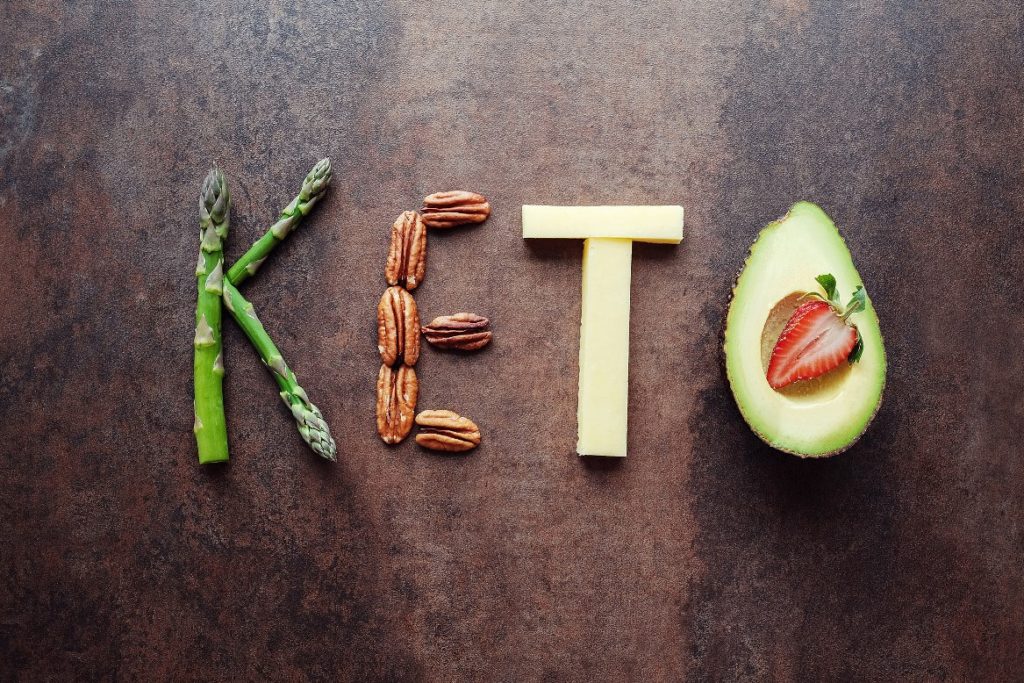First of all, there is no such thing as an ‘autoimmune diet’. Every individual reacts differently to various chemical compounds in food, some agree with us better while others don’t.
Since chronic inflammation is an inescapable symptom of an autoimmune disorder, you’ll have to do a lot of exploring and risk days of feeling like a wreck in order to narrow down the selection of dietary products which, at the very least, do not promote inflammation.
Thankfully, thousands of years of human experience are behind us, and the latest breakthroughs in dietary regimes have established fairy reliable information so you can create a healing diet plan to try if you have an autoimmune disorder.
1. Ketogenic diet
Let’s get one thing out of the way – if you have thyroid problems, the keto diet is definitely not suited for you. In the case of Graves’ disease or Hashimoto, moderate carb intake is typically a way to go. It is crucial to point this out because carbs make up only about 5% of a keto diet. 75% of it consists of fats and 20% of protein.

This replacement of carbs with fat as the dietary basis puts your body in ketosis mode. When this metabolic process begins, your body will start burning fat for energy in the most efficient way possible.
Your liver will also begin to feed your brain with more energy, which leads to better cognitive performance. Therefore, you will not only reduce the symptoms of your autoimmune disease but also perform better at work.
You may be asking yourself how does the keto diet decreases the overall inflammation. Due to the process of ketosis, oxidative stress is reduced, the effect of antioxidants increases and this naturally leads to lowered inflammation in your body.
2. AIP – or the autoimmune protocol diet
As you can see, the P in the AIP abbreviation does not stand for Paleo, but it is a dietary plan assembled for people who practice Paleolithic eating habits.
If you were to ask any nutritionist about the potential benefits of the AIP diet, they will tell you that the simplicity and flexibility this option offers makes it ideal for a lot of individuals, whether you have an autoimmune disorder or not. It is an especially useful diet if you are physically active.
In essence, your AIP diet will mostly consist of fruits, vegetables, and meat – which are to be purchased as organic and clean as possible. If you can find wildlife meat, it is even more ideal.
While you do not necessarily have to avoid legumes, nuts, and eggs (it depends on your allergy and what sort of food suits you best), you should definitely avoid anything with refined sugars, pastries, juices, nightshade veggies, seed oils, and dairy. In essence, if you make an effort to avoid any sort of food that was introduced to us over the last hundred years or so, you are on the right track.

An additional perk of the AIP diet is that it follows a food elimination protocol. What does this mean? Essentially, there are various food groups out there that can contribute to your inflammation, depending on the autoimmune disorder.
While there is a chance that some groups may contribute more than others, you can never know for certain until you go through the process of elimination. This is why you are meant to take them out of your diet and then slowly reintroduce them while diligently observing the effects.
3. Low-starch diet
As you probably guessed by now, starch may be the bane of your existence.
Many people that suffer from autoimmune diseases only worsen the symptoms (including, of course, inflammation) by consuming most bread and pastry (what is the uniting factor here), but also potatoes, maize, cassava, and rice. If you are looking for a concrete culprit of your pronounced symptoms, look no further than Klebsiella. This type of bacterium grows on starch.
It all began when researchers discovered a peculiar thing in patients that suffer from ankylosing spondylitis. The presence of this bacterium in their guts and elevated antibodies that target Klebsiella in the bloodstream led them to conclude that it may be a contributing factor to the symptoms of autoimmune diseases.
If you plan to go on a low-starch diet, you’ll find there are a lot of similarities it shares with a Paleo program. However, you are not only meant to avoid processed foods that are rich in starch.
You should also diligently remove all the starchy veggies from your eating plan: including sweet potatoes, leas, lentils, chickpeas, yams, taro, corn, and beans (black, kidney, cannellini, navy, pinto, pretty much all of them). Instead, enrich your diet with brussels sprouts, mushrooms, onions, leafy greens, cauliflower, and broccoli.
Conclusion
You can draw your own conclusions based on the dietary plans offered above. Nothing is written in stone, so you are not obliged to follow any of them to a ‘T’, so knock yourself out with experimentation and trying to push your limits. You should keep your diet as diverse as possible.
If you feel defeated by the set of limitations that you are about to impose on yourself, keep in mind that many healthy people choose these types of diets and dietary restrictions simply because it has countless benefits. You do not have to limit your intake; it is only about what you eat, not how much you consume.
